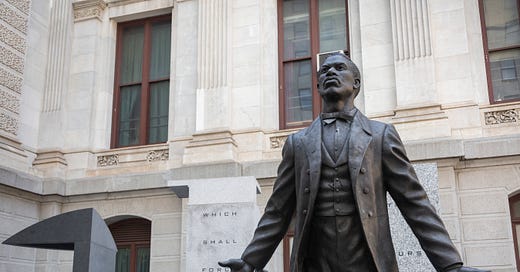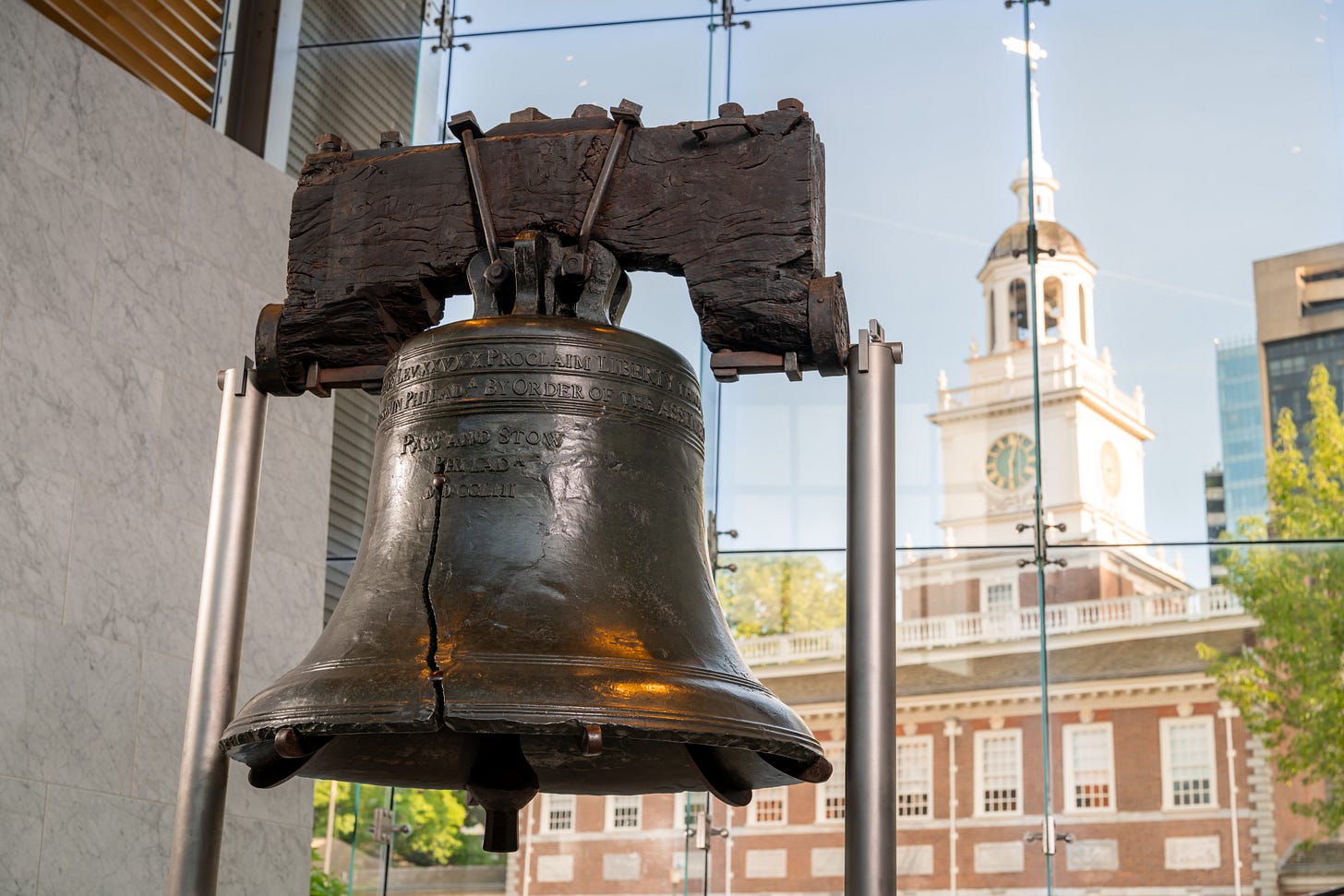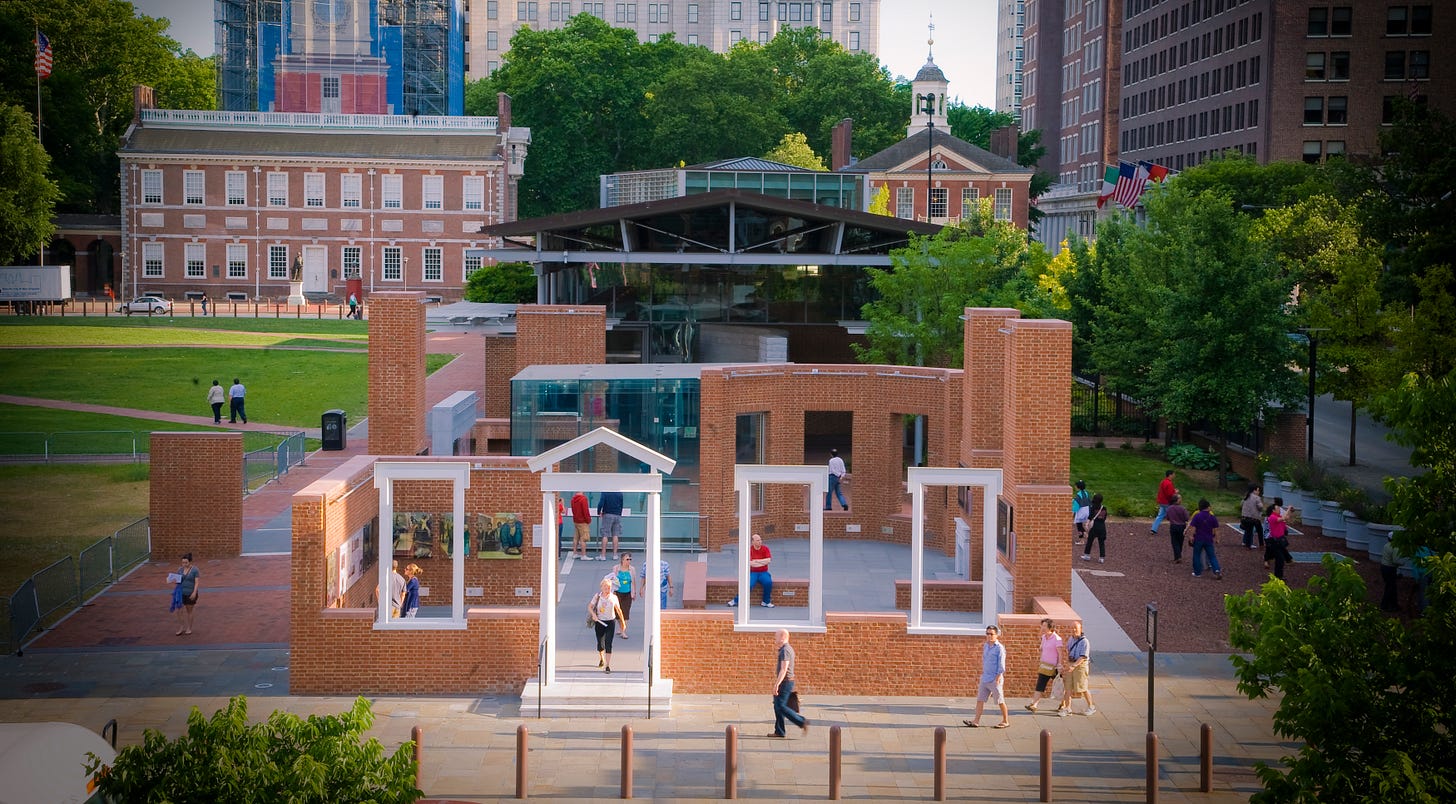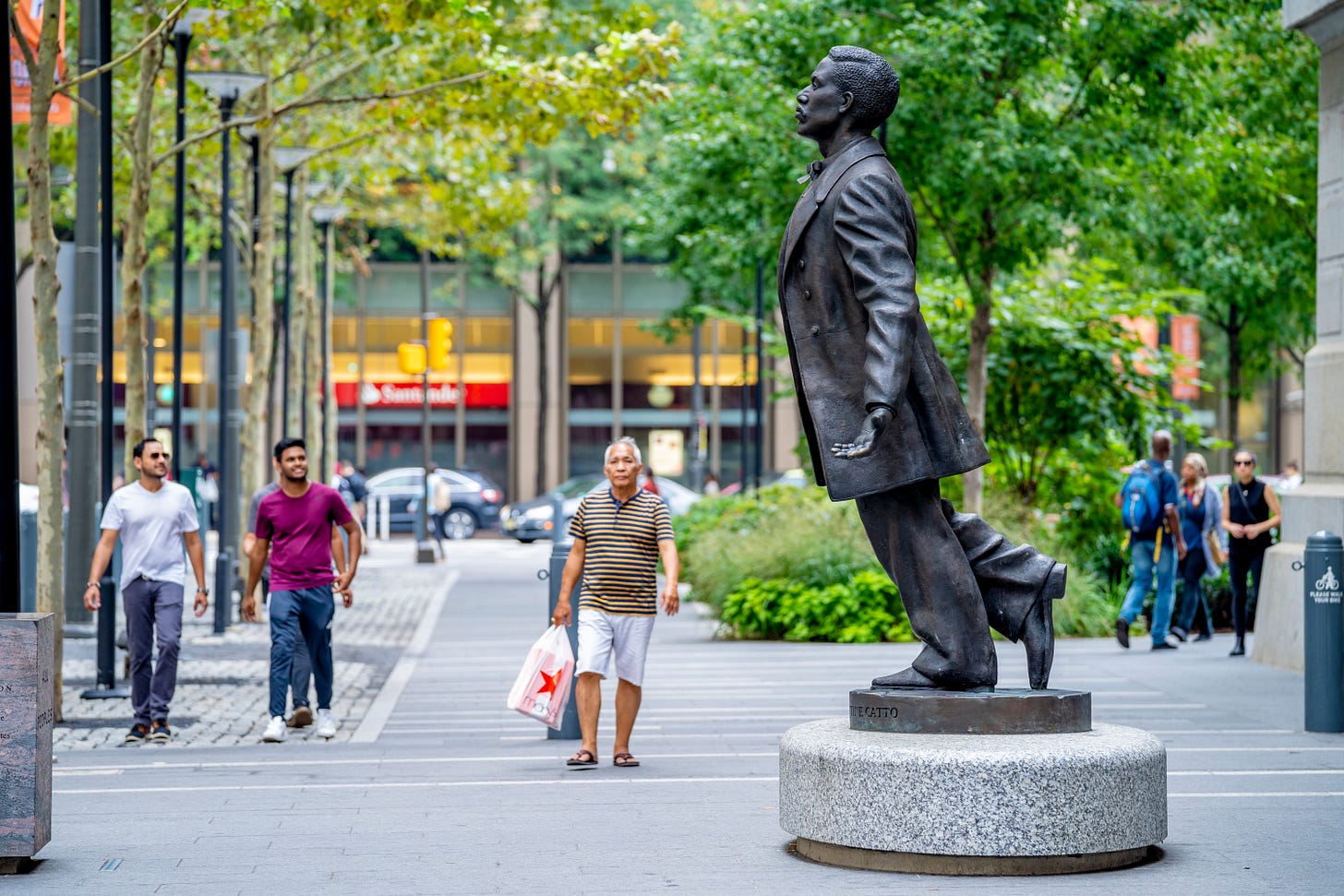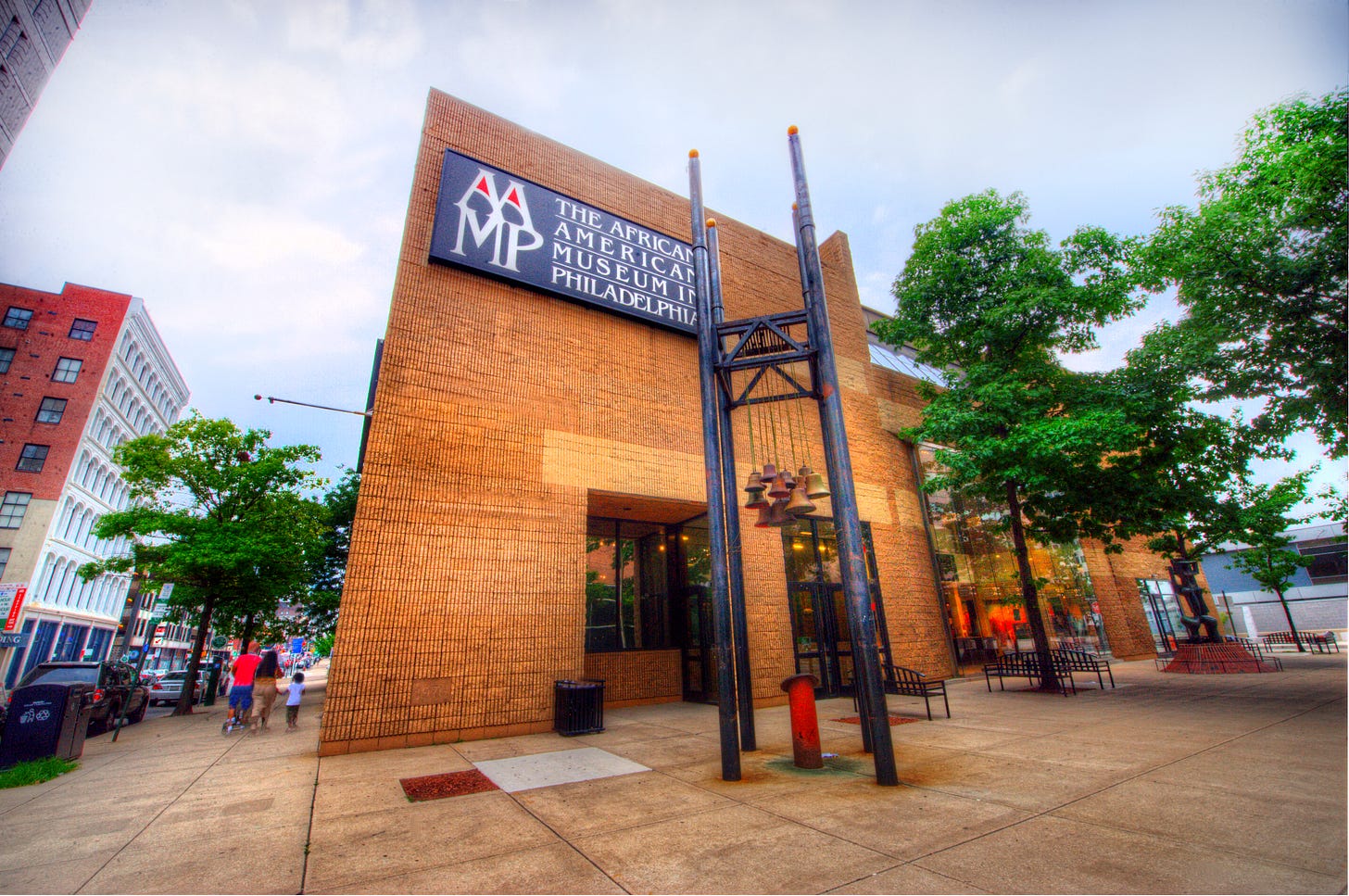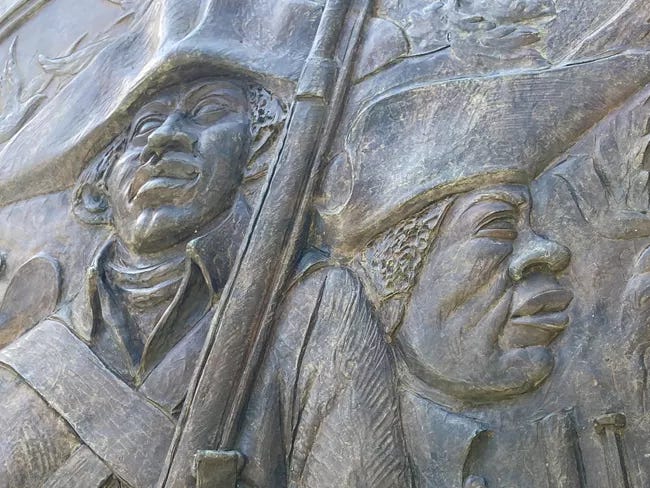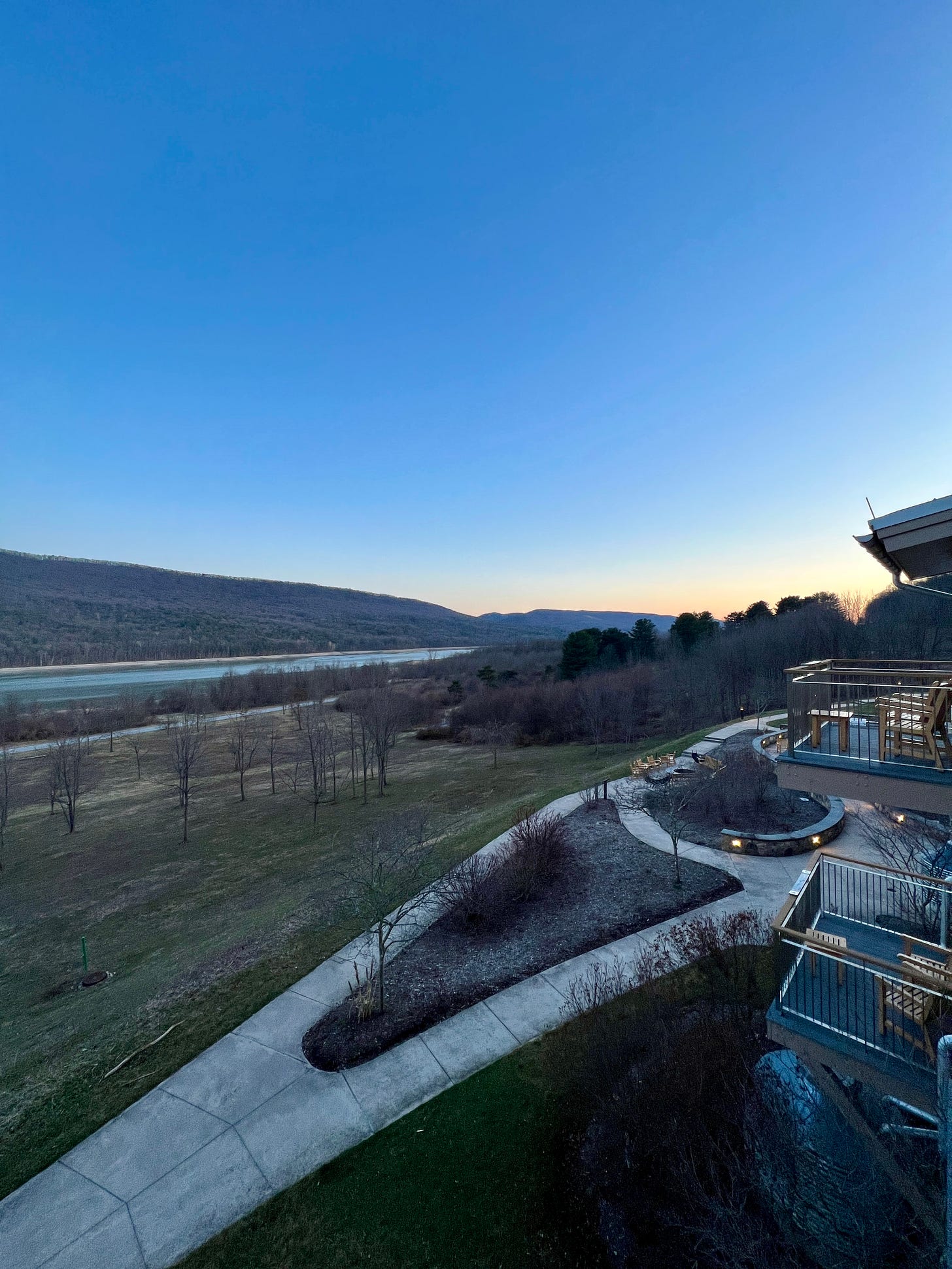How to: Celebrate Octavius V. Catto and other Black history-makers whose names and stories you've likely never heard
In Other News #12 // Celebrating the stories of everyday heroes among us.
Photo Credit: VISIT PHILADELPHIA®
One of the great liabilities of history is that all too many people fail to remain awake through great periods of social change.
Every society has its protectors of status quo and its fraternities of the indifferent who are notorious for sleeping through revolutions.
Today, our very survival depends on our ability to stay awake, to adjust to new ideas, to remain vigilant and to face the challenge of change.
Martin Luther King, Jr.
Speaking in 1968, months before his assassination
Every February for nearly 50 years—since 1976—February’s Black History Month celebrates and recognizes African Americans’ achievements and talents, and acknowledges hurts and wrongs, throughout the past and present.
And there’s perhaps no better place to explore and celebrate Black History Month than Philadelphia and its environs, where our nation’s democracy was founded.
And there’s perhaps no better year than this year, to reflect, remember, and speak out about what democracy truly is.
Here are five places—many of them iconic, others relatively unknown—open to the public, where you may visit and expand your understanding of Black history, which I’ve heard many historians say is truly American history.
Photo Credit: VISIT PHILADELPHIA®
Liberty Throughout the Land
First, let’s start with the familiar:
The Liberty Bell is simply one of the most recognizable symbols of American freedom. At the center, visitors can learn about the bell’s direct connection to African American history—along with fun facts about its size (2,080 pounds), its famous crack and its original use atop the State House (which we now know as Independence Hall).
The bronze bell’s inscription reads, “Proclaim Liberty Throughout All the Land Unto All the Inhabitants thereof,” taken from the Bible’s book of Leviticus. This verse became a rallying cry for abolitionists striving to end slavery—just as the bell became a symbol of their movement.
Beginning in the late 1800s, mayors and city officials across America requested the Liberty Bell travel by rail for display in their cities, to help heal the divisions among people following the Civil War. The beloved bell, and its message, continued to inspire the women’s suffrage and Civil Rights movements, and it continues to be a source of inspiration for visitors of all ages and backgrounds today.
The Liberty Bell Center | Independence National Historical Park | 526 Market St, Philadelphia, PA 19106
Photo Credit: VISIT PHILADELPHIA®
The President's House—and Its Paradox
Just steps from the Liberty Bell lies a paradox. The open-air “President’s House” exhibit includes the layout and structural remains of President George Washington’s residence. Although the house was demolished in 1832, the foundation is still embedded in the ground.
Panels and videos bring a contradictory story to life: As our nation’s first president was guiding a young, experimental country, his household included Black slaves.
The house is part of the National Park Service (NPS) complex including Independence Hall—where visitors can consider that the words “All men are created equal” and “We the People” were adopted.
As the NPS website explains, “The President's house in the 1790s was a mirror of the young republic, reflecting both the ideals and contradictions of the new nation.”
This moving and thought-provoking exhibit, whose full title is “The President’s House: Freedom and Slavery in the Making of a New Nation,” is sure to prompt family questions, reflections and discussions.
The President’s House | 530 Market St, Philadelphia, PA 19106
Photo Credit: VISIT PHILADELPHIA®
Casting His Vote
The Octavius Valentine Catto Memorial is the first public monument in Center City that pays homage to a specific African American. Located in the shadow of City Hall, the memorial’s full title is, “A Quest for Parity: The Octavius V. Catto Memorial.”
Wait, who was Octavius Valentine Catto?
There are numerous ways to answer that question. After graduating as the 1854 valedictorian from the city’s Institute for Colored Youth (which would become the historically Black college we know today as Cheney University), he went on to become one of Philadelphia’s most influential Black leaders of the Civil War era. Catto dedicated himself to African American social justice issues such as desegregating city streetcars and advocating for equal voting rights. He was also an athlete who played for Philadelphia’s first successful Black base ball club. (Yes, base ball was two words back then.)
The Civil War further sparked his activism. Catto, along with Frederick Douglass and fellow Black leaders, formed a committee to recruit Black men to fight for the Union—and emancipation. Catto himself joined the Pennsylvania National Guard, and became the highest-ranking African American in the military at the time.
Tragically, he was assassinated at the age of 32 on October 10, 1871—the first election day in which Black men could participate. His murder was an act of violence and intimidation, aimed at suppressing the African American vote. That’s why he’s memorialized in bronze, larger-than-life at 12-feet-tall, striding toward a ballot box to cast his vote.
At the monument’s dedication in 2017, Philadelphia Mayor Jim Kenney called Catto “a courageous, unsung, young American military hero — who like countless other unknown and seldom recognized black Americans — contributed so much to make America great.”
The Octavius V. Catto Memorial | 2 E. Penn Square, Philadelphia, PA 19107
Photo Credit: VISIT PHILADELPHIA®
A First for African Americans
A museum dedicated to preserving and celebrating Black culture, the African American Museum in Philadelphia (AAMP) itself made history as the very first museum of its kind in a major American city. Founded in 1976, this bright, colorful and engaging museum offers activities for visitors of all ages. AAMP is an affiliate of the Smithsonian Institution.
The Children’s Corner, designed for kids ages 3 through 8, is a hands-on area where kids can “meet” Philadelphia’s youngest residents of 1776-1876. It’s part of the museum’s core exhibit, “Audacious Freedom: African Americans in Philadelphia 1776-1876”—the first 100 years following the birth of our nation. Its interactive timeline brings history to life, including the stories of 10 trailblazers such as Octavius Catto and Frances Ellen Watkins Harper, one of the first African American women to be published in the U.S.
The African American Museum in Philadelphia | 701 Arch St, Philadelphia, PA 19106
Photo Credit: NPS
Valley Forge’s Patriots of African Descent
While Valley Forge National Historical Park is known for the Revolutionary Army’s winter encampment in 1777-78, many visitors may not know that included more than 700 Patriots of African descent. In total, between 5,000-6,000 enslaved people fought for our country’s independence from the British by serving in the Patriot Army. In fact, many Black soldiers fought in integrated military units—something that did not happen again until the Korean War, 170 years later.
Today’s visitors can honor these brave soldiers and reflect on their experiences at the park’s Patriots of African Descent Monument. The granite and bronze monument, designed by Black artist Cal Massey, depicts three soldiers with doves of peace in the background, anchored by laurel leaves at the bottom to symbolize victory and honor.
The Artist Behind the Artwork:
Cal Massey (1926-2019) blazed a trail through the Philadelphia arts scene. He was a jazz pianist as a young man—part of a jazz trio that even accompanied Aretha Franklin at a Philadelphia show. But it was his work as a visual artist that broke many barriers. A graduate of the Hussian School of Art, Massey worked directly with Stan Lee of Marvel Comics as a comic book illustrator. In the mid-1980s, he was one of the artists involved in the Statue of Liberty Foundation’s renovation project, for which he sculpted a bas-relief of two French West Indian immigrants arriving at Ellis Island.
That sculpture led to another high-profile position: The Olympic Committee hired Massey, one of 13 artists, to design commemorative medals for the 1996 Summer Games. His design depicted a young Black Woman poised for the high jump—the only medal for that year’s Olympics to feature an African American.
The back of Massey’s sculpture design at Valley Forge is inscribed, “In Honor of the PATRIOTS OF AFRICAN DESCENT who served, suffered, and sacrificed during the Valley Forge Encampment 1777-1778.” There is also a quote by Charles L. Blockson, founder of the Blockson Collection of African American historical documents at Temple University: “Throughout these historic and hallowed campsites were courageous Black Patriots who participated in our nation’s bitter fight for independence.”
Patriots of African Descent Monument | Valley Forge National Historical Park | Joseph Plumb Martin Trail, King of Prussia, PA 19406
Nature Nugget
A quick travel tip and photo, sharing incredible views, trails, or parks
The Nature Inn at Bald Eagle—and its environmentally-inspired design—goes to the heart of the meaning of Pennsylvania as “Penn’s Woods.” It’s the only lodge located in a Pennsylvania state park, Bald Eagle State Park, near State College.
Perched atop a hillside, the soaring structure is oriented to a lakeside vista, cocooned by mountains lit by dewy sunrise views, as well as cotton candy sunset skies.
Twice, I have enjoyed staying at The Nature Inn for writing retreats, and I can honestly say I was inspired by the surroundings.
Luna Lens
Sharing a photo of my fluffy floofy dog Luna… because there’s plenty of fluff to go around.
Sometimes, I wonder if Luna wants to assist with the cooking, or if she’s just parking herself in the middle of the action, so as to remind us that she needs her dinner too. (As if we would ever forget to feed her!)
Comfort Corner
A great recipe, or a Spotify song. Comfort food or chill tunes. Maybe both.
An easy-peasy, delicious winter meal, thanks to New York Times Cooking!
Be well,
Karen

